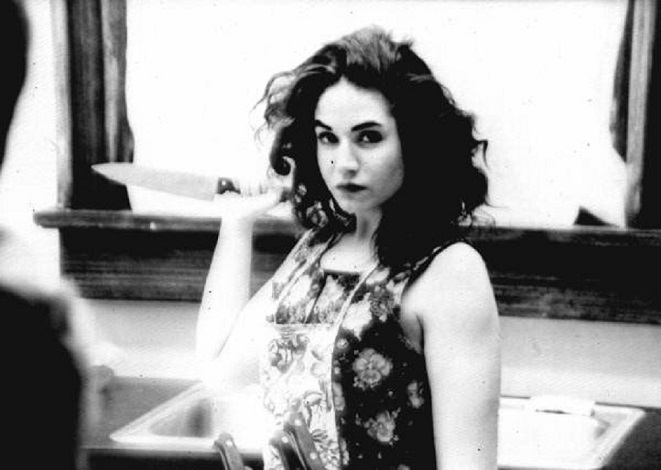
Horror is tits, ass, and a bucket of blood. Wickedly so. But horror is also more than tits, ass, and a bucket of blood. As I mentioned (or rambled about) in my last article, Kissed by Death, horror has many facets and has the potential to make you feel better about death. But there is a dark side to the Grim Reaper’s doings, apart from the obvious. Violent as horror can be, we know that no one really gets hurt. Except for that turtle in CANNIBAL HOLOCAUST. And Vic Morrow. The soccer moms can come at us with their pikes and fanny packs, shouting at us about how depraved they think we are, yet we can take solace in the fact that at that moment, they’re doing more damage than any horror movie has. The Cinema of Sex and Violence is harmless: reality’s the fucked-up one. Serial killers thrive there for reasons that could never fly even in a Troma movie, and they’re real. And they have fans. However, this won’t be an article full of fire, brimstone, and pointed fingers. Far from it. I’ll be sharing a few things about serial killer culture, then you make up your mind. And to keep things from turning too many shades of New French Extreme, it’ll be through the lens of a dark comedy from 1996: CURDLED. It’s damn interesting how it got made (with a little help from Quentin Tarantino). Let’s rot.

It started off as a student film in 1991. Actually, it started with two. John Maass was a student and saw a commercial for a body removal service. Inspired, he wrote CURDLED as a short film. He wanted to direct it as well as his friend, Reb Braddock. So they did, neither seeing anything about the other’s short ‘til they were done. The story stayed the same: a quirky body remover was on the job when she’s visited by the murderer of her current client. Before the victim died, she wrote his name in permanent marker on the floor. Unable to erase it, he covered it in blood. Having returned, he wanted to make sure it got erased. The woman complied, he tried to kill her, slipped on her cleaning brush, and she killed him. Both shorts starred Angela Jones, and I’ll explain why she looks familiar in a little while. Braddock did a better job with his short, so that’s why it ended up in the Via Reggio film fest, in Italy.
Quentin Tarantino was touring the world with RESERVOIR DOGS in 1991, and one stop was the Via Reggio festival. He and a friend decided to check out the short films that were being presented. As each terrible short ended, they became more aware of how hungry they were. Tarantino had enough and was about to leave… when the MC said that the producer of the next short was in the audience. Not wanting to embarrass or disrespect John Maass, Tarantino chose to stay. But if it was a piece of shit, he’d be leaving in the first few minutes. Twenty minutes later, Tarantino congratulated Maass and told him that a) he should expand CURDLED into a feature, and b) he should keep Angela Jones. CURDLED was a student film from Florida State University. In most colleges, the film and theatre departments avoided each other like Pinhead and magnets. Because of that, student films tend to have atrocious acting from the director’s friends instead of decent acting from professionals. Although Angela was a theatre animal in FSU, she didn’t care, and we’re better for it.
Braddock and Maass worked on the script for a year, with Tarantino offering moral support ‘til he got the first draft. In the meantime, he cast Angela in PULP FICTION as Esmeralda. Y’know, the cab driver. Then he became an executive producer (someone who gets money for the project) and gave the script to Miramax. Two million dollars later, CURDLED was feature-length and about a woman whose serial killer fascination takes her to darkly comic places. Said fascination probably allowed her to separate most truths from myths.
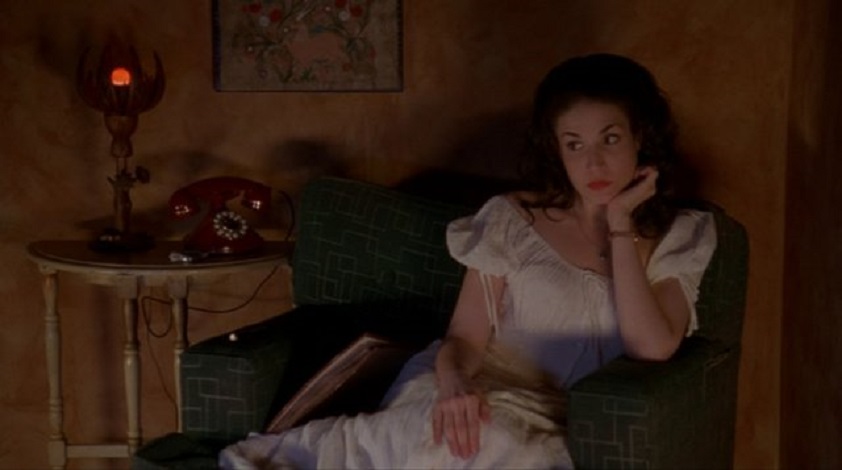
In his book, Why We Love Serial Killers, Scott Bonn explains just that. An excerpt article, 5 Myths About Serial Killers and Why They Persist, sheds light on a few misconceptions we have. First, serial killings account for only 1% of all US murders. TV and movies paint a different picture… but they’re in the business of sensationalism, damnit. Second, the FBI estimates that 25-50 serial killers operate at any given time. Far less than you thought, right? Alas, we’re not counting politicians. Third, serial killers aren’t all white guys. There’s a rainbow of ethnicities that make up that demographic, with plenty of help from women. Every group needs a poster child, though. Fourth, serial killers can exist quite well in society. Like Carlin said, it’s not the quiet ones. In the case of Ed Kemper, some go so far as to befriend the cops tracking them. Fifth, most serial killers aren’t geniuses or mentally ill. They’re pretty normal, as far as smarts go, and the legalities of insanity are too byzantine to get into here. Basically, the murderer is sane if they know right from wrong. In the Columbian summer of 1977, a little girl was introduced to the world of murderers with a loud thud.
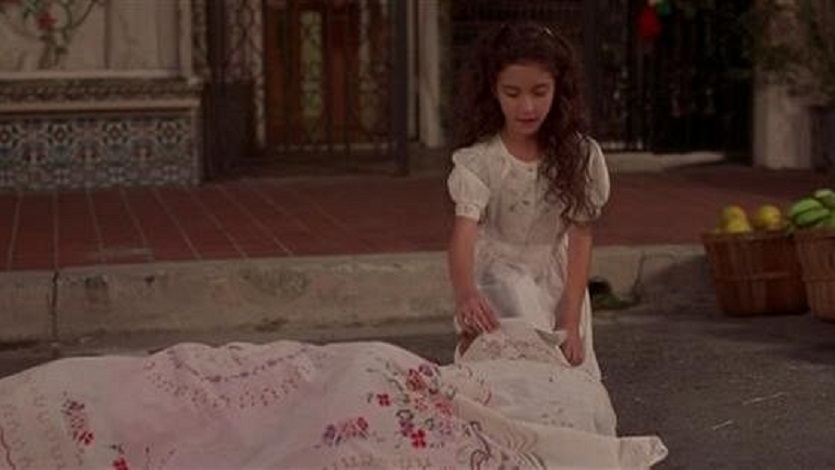
Gabriela was enjoying life in her mother’s bakery one day when, suddenly, a man fell to his death outside. Her attention went from the gingerbread house to the linen-covered corpse. A peek underneath started her life as a death-admirer. Something to point out: most stories paint morbid people as victims, whereas Gabriela is just a normal woman who grew up liking death. Nothing bad happened to her and she wasn’t forced into a macabre lifestyle. Everything’s on her terms. Well. Back to her being fascinated instead of frightened.The opening credits (drawn by Braddock’s mother) showed the evolution of Gabriela’s Thanatotic love. It started with death, in general, then got refined ‘til her focus was on a local serial killer: The Blue Blood Killer. He cut off the heads of rich women after stabbing them repeatedly, you see. Not with a regular knife, either. His weapon of choice was as bourgeoisie as his victims: a tanto. It’s a short sword that samurai used during hara-kiri (self-disembowelment, ghosts and ghouls). The decapitations were interesting because Gabriela developed a curiosity about severed heads. She thought that they spoke after the blade came down. After watching a guy meet the guillotine, she saw a commercial for a crime scene clean-up company. Being an adult admirer of a serial killer, I assume, comes with a level of maturity that teenage admirers can’t have yet. That’s right: they exist and not all of them are American.
Inside the World of Feminist Teen Girls Obsessed With Serial Killers, an article by Joshua Surtees, is a series of interviews with murderer-admiring teenage feminists. One girl is 17 years old and lives in rural America. She’s sexually attracted to violent criminals, especially necrophiliacs. Dahmer was her first crush because he killed and ate people. She’s not homicidal, but she would get horned-up if someone she knew got into the murder business. She identifies as “a radical feminist who also happens to be highly attracted to people that abuse and murder women”. She feels that shows like Hannibalnormalize crime because they’re the ones who “put violent criminals in a good light are more the perpetrator than people who seek to inform.”
A 16-year-old girl from rural Ohio is open about her love of serial killers, and started because of Richard Ramirez (the “Night Stalker”). She feels that female serial killer fans are attracted to the danger. She also feels that Ramirez killed women because of bloodlust, and that he didn’t hate them. She then brings up his death row interview where he said that he didn’t realize that women had feelings ‘til he talked to his female groupies.
In the UK, a 19-year-old sociology student says that serial killers and the like interest her because “they deviate from the norm and don’t really care”. She admits to having romantic feelings for serial killers because violence is exciting. “It’s a bit like Russian roulette—my turn could be soon and he could kill me. Spice things up a bit. Conventional stuff is boring.” She’s open about her murderous ardor with her friends. She also has mixed feelings about being a feminist, but considers herself one.
For single guys who might be thinking about taking up knifework to get a date… there’s crazy sex waiting for you with women who don’t like serial killers. Ones to keep a weather eye open for: Mindless Self-Indulgence fans, MARTYRS fans, and Johnny the Homicidal Maniac fans. You’re welcome. Back to Gabriela and that commercial she saw.
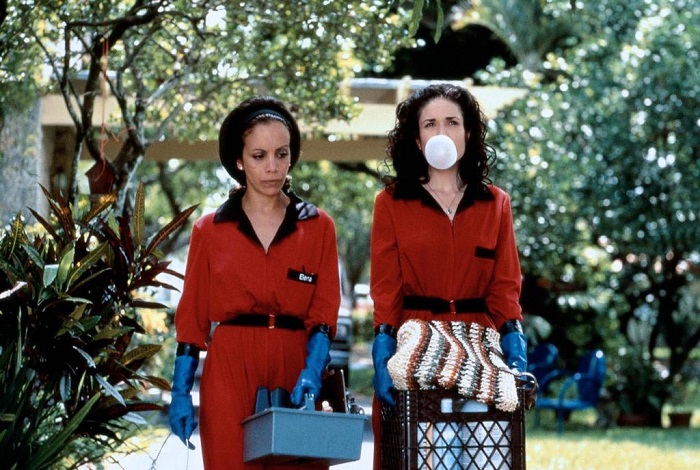
The PFCS (Post Forensic Cleaning Service) immediately caught her attention and soon, she showed up to its office for an interview. Even though they weren’t hiring. She used to work in a bakery, but was fired for reasons explained in the DVD’s deleted scenes. The boss of the PFCS, Lodger, subtly tested her by describing how gruesome the job could be. She didn’t mind. He was then worried that she was a gorehound. She denied it. I’d like to take a moment to applaud Angela Jones’s portrayal of Gabriela. She played her like a big kid, and that innocence was so smart to embrace. The character could’ve easily been at home in a Michael Haneke film instead of a Latina member of the Addams Family. I wish directors didn’t forget about her because she’s got a lot of tricks in her kit. Anywho… Gabriela got the job and the story moved to the Blue Blood Killer. Or rather, Paul the Bartender. Yup, he slung hooch at a swanky bar and hit on his clientele. Women aren’t all victims, though. At least nine of them are madly sadistic.
Steven Casale’s article, 9 Notorious Female Serial Killers, lists a few women who show men that they’re just as capable of depravities as they are. Nannie Doss, “The Giggling Nanny”, took to killing with arsenic and laughed while being interrogated. “The Blood Countess”, Erzébet Báthory, bathed in the blood of young women to stay young. She was also immortalized by McFarlane Toys in a figure that this author may or may not own:
Amelia Dyer was known as “The Reading Baby Farmer” because she took money for taking care of babies, then forgot to take care of babies. “Jolly Jane” Toppan was a nurse found insane after killing patients to murder more “than any man or woman who ever lived.” “The Demon Midwife,” a.k.a. Miyuki Ishikawa, was an elitist bitch who killed 103 impoverished children because she felt that they didn’t have a chance. Dorothea Puente, “The Death House Landlady,” killed many elderly and mentally ill people for their money. The director of WONDER WOMAN’s first film starred Furiosa and Wednesday Addams, and it was about Aileen Wuornos, “The Florida Highway Killer.” She said that her murders were in self-defense, but there’s a such thing as excessive self-defense to Floridian courts. Juana Barraza is serving a 759-year sentence for killing 11 old women and earning the moniker, “The Old Lady Killer.” Leonarda Cianciulli was “The Soup-Maker of Correggio,” and she was Italy’s answer to Sweeney Todd and Mrs. Lovett with teacakes and soap. But the Blue Blood Killer’s good enough for Gabriela and though she didn’t know it at the time, the PFCS gig was gonna get her closer to him than she ever thought she would.
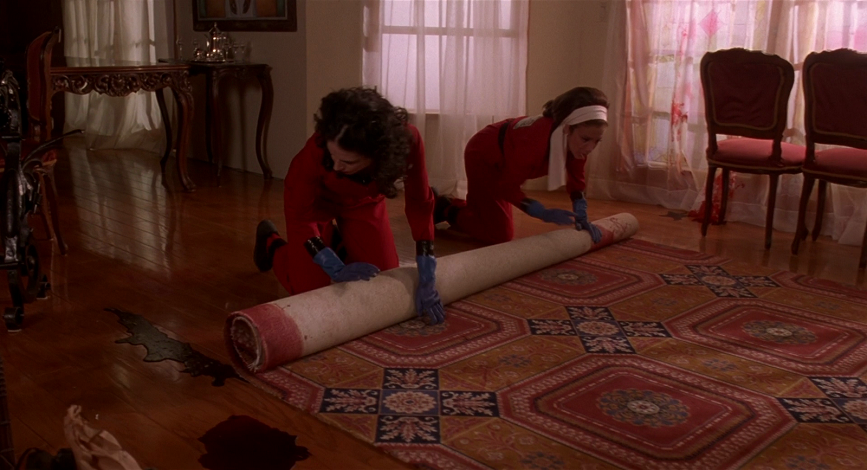
Eduardo, a baker from Gabriela’s ex-job, stopped by to drop off her last paycheck. He next tried a bit of romance by asking about her morbidity, then asked her out. Paul, in another part of town, was monologuing before killing his latest victim. As you did in the 90s. Bleeding to death on her kitchen floor, she left her legacy scrawled in Sharpie on the tile: good ol’ Paul’s full name. In a panic, he finished what he started and tried in vain to clear his name (heh). Someone was coming in through the front door, so he covered her confession in blood then got the fuck out. At the PFCS, things were mundane as Lodger handed out assignments and lumped Elena with her new partner, Gabriela. While getting ready, Gabriela found out that Elena cleaned the Blue Blood Killer’s first murder. But she asked too many questions and was blown off.
Gabriela is more disturbed than I think she thought she’d be at her first murder scene since childhood, but she did her duty. CURDLED took place just after the events of FROM DUSK TILL DAWN because the reporter on the television, Kelly Hogue, mentioned the missing Gecko Brothers in her Blue Blood Killer exposé. Back at the PFCS, two workers were being scolded for forgetting to clean skull fragments of a shotgun suicide from underneath a kitchen table. Lodger then told his secretary to put away a Blue Blood folder. Gabriela noticed, of course, and stole it the first chance she had. Lodger checked in on her through Elena, who griped about her arrested development. Later that night, Gabriela was cooking for her date with Eduardo while looking over crime scenes. He brought her an article for her murder scrapbook and, during dinner, she told him about her new job. Disturbed, he asked her out again. After he left, she cleared out the living room and examined the murders more thoroughly. As you’ve read, you understand that a lot of serial killer fascination focuses on the murderer. But what about their families? Their daughters?
Melissa Moore grew up the daughter of Keith Jesperson, “The Happy Face Killer,” and in her article, My Evil Dad: Life as a Serial Killer’s Daughter, she goes into detail about what that was like. She was 15 the last time she saw him before he was locked up. He took her, her brother, and her sister for a trip in his semi. He didn’t smoke, but her brother saw cigarettes in the glove box. Keith said that it was for women he picked up. She found duct tape in the sleeper cab, but brushed it off. Keith was astoundingly specific when he talked about sex to Melissa, including what it was like with her mother. He also sexually harassed women in public. He took her to a diner after dropping off her siblings and seemingly tried to confess his murders (“I can’t tell you, sweetie. If I tell you, you will tell the police. I’m not what you think I am, Melissa.”) A few months later, her mother told her that her father was arrested for murdering his galpal, Julie Winningham.
When she was five, she was playing with kittens that she found in her farmhouse. Dear Keith hung them on a clothesline and tortured them in front of her. She found them later in the garden. He also twisted the neck of another cat in front of her and her brother when he saw them playing with it. From family to fans…
Gabriela showed up to work with gingerbread cookies for everyone, which were happily accepted. As everyone talked and nibbled, she shoved her decapitation theory into the conversation (it went over better than you think). Lodger handed out assignments again, and she greedily elected her and Elena to clean the Blue Blood Killer’s latest scene. Elena wasn’t having any of that, but none of the others wanted the gig. Lodger then tried to tell Gabriela off, but she convinced him that she’s ok to do it. They got to the house as Paul was trying to clear his name (heh). His instinct made him hide in the wine closet. Safe, but if he paid attention, he would’ve seen that it could only be opened from the outside. He got particularly nervous when he saw Gabriela find the black marks, and was understandably confused when she hid them in blood again.
Gabriela’s… enthusiasm for this job got to Elena, but Lodger didn’t care since they took care of what they needed to that day. Later that night, on their date in a club, Gabriela told Eduardo about cleaning up the Blue Blood murder scene. She next tried drawing a diagram and Paul’s name in lipstick on a soggy napkin. Quickly finding out why that’s a recipe for disappointment, she got a “better” idea. It became too much for Eduardo at the murder house and, as he freaked-out, Gabriela accidentally set Paul free. Eduardo tried to get her to leave with him (like a chump), but she chose to stay and examine the scene (like a champ). From fans to family.
It was hard for Melissa to understand that her father was a killer because he was a good father to her when he’d come back from his trucking trips. He once told her that he drove past a penitentiary and shouted tauntingly that he’d be there someday, but not that day. When she was 13, he explained how to kill someone and get away with it. What she couldn’t know ‘til much later was that he told her that near where he hid the body of Taunja Bennett. Keith left confessions at truck stops and sent letters to the media, always signing with a happy face. Hence the nickname.
When she was in high school, her father’s ferocious life was widely known and parents reacted appropriately with their children. Because of that, she wrongly felt guilt and shame, and that she had to pay for his crimes. She was also in an abusive relationship that, again, she wrongly felt was because of her father. One thing that she was worried about was genetics. She shared the same murderous DNA with the Happy Face Killer. Could she be him? Could she be worse than him? To stop from conjuring anything resembling him, she kept that part of her life secret. From family to fans.

Alone, Gabriela made a dance out of figuring out how and where the Blue Blood Killer slayed his latest. From the kitchen, to the living room, to the kitchen again. But then, she wasn’t really alone. Paul watched from the shadows, unbeknownst to her. Eduardo came back, but Paul knocked him out before he could do anything. When he revealed himself to her, she was startled. Out of embarrassment, or because she knew who he was? In any case, he made her tell him what she was doing after getting her to clear his name (heh). They danced together as he revealed his tricks. Her curiosity was an aphrodisiac to him. At the end, they settled over the bloody outline and were so into each other… ‘til she lost all interest in him. He told her that the cut-off heads don’t talk, you see. Her indifference hurt him and he turned on her. He stalked her like the doe-eyed prey she had suddenly become. Just as he was about to kill her, he slipped on a cleaning brush and knocked himself unconscious. Fate stepped a little closer to Gabriela by giving her a sign for what to do next. And a stereo that could record her revenge. From fans to family, one last time.
Melissa eventually got her good life with a husband and her kids. A life away from Keith. However, her daughter asked her one day, “Mommy, everyone has a daddy. Where’s your daddy?” At the time, Melissa didn’t explain completely, but she eventually wrote a memoir, Shattered Silence, along with giving interviews (she was even on Oprah). She got many thank-yous from families of serial killers, and was asked many times for advice. She stayed in contact with this 300+-person group who gave her life meaning and direction. One day, she was contacted by an English mother whose spouse was a serial killer. One of the mother’s daughters was suicidal because of the news, and Melissa got some of her group to write her letters.
Melissa wished her father got the death penalty instead of consecutive life sentences. She’s thankful that she could talk to the sole survivor, a woman who was raped and almost strangled in front of her baby. She couldn’t delude herself about her father anymore. He considered himself a great father whose “only mistake was his eight errors of judgment”. His eight murders. She believed he was still a good person ‘til her grandfather told her that Keith said that he had thoughts of killing his kids. That set her free because it destroyed the concept of a double life in her head.
And there you have it. Peeks into the world of serial killer culture, the life of someone who grew up with one, and a recommendation for one of the most unique movies from the ’90s indie scene. Humans are creatures of excess, so there’s plenty more out there for you to peruse. I think the documentary, SERIAL KILLER CULTURE, is still on Netflix, and there’s still the deep web. Just don’t do anything they would.
Tags: Angela Jones, Barry Corbin, Bruce Ramsay, Daisy Fuentes, George Clooney, Horror, Italy, John Maass, Kelly Preston, Lois Chiles, murder, Quentin Tarantino, Reb Braddock, The 1990s, William Baldwin


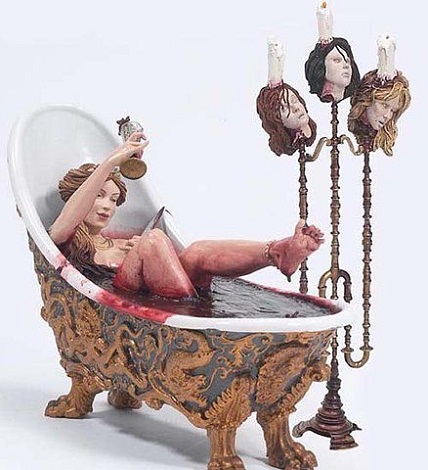
No Comments